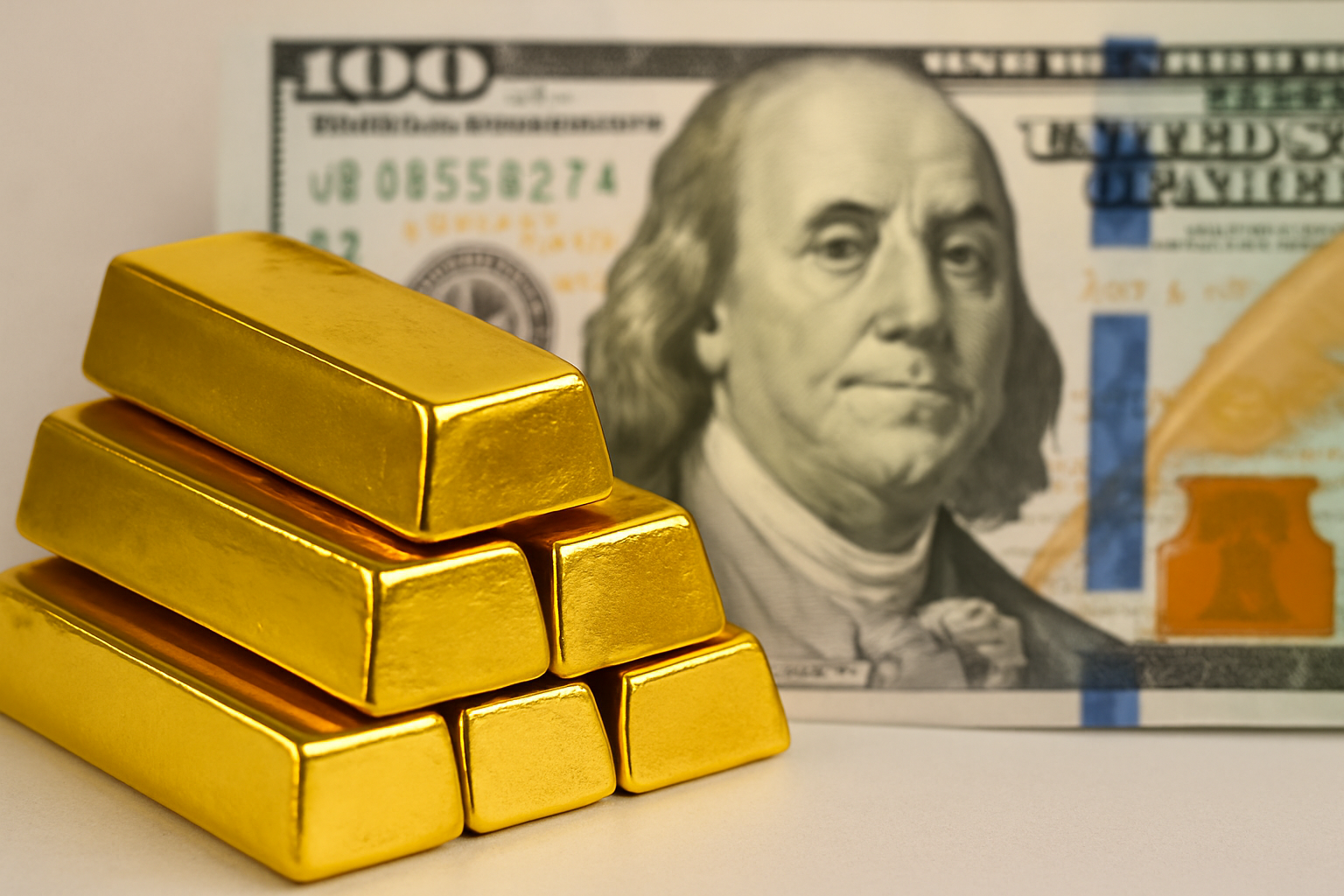Gold investors are navigating turbulent waters this week as spot prices head toward a second consecutive weekly decline, dragged down by a surging U.S. dollar, cooling geopolitical risks, and anticipation surrounding Friday’s U.S. Personal Consumption Expenditures (PCE) inflation data—the Federal Reserve’s preferred inflation gauge.
Spot gold fell over 2% this week, reaching its lowest level since late May. Futures contracts for August delivery dropped to $2,285 per ounce on Thursday, extending a retreat that began with the strengthening of the dollar index (DXY) and subsiding tensions in the Middle East. With investors rotating toward safer, yield-bearing assets in anticipation of a more dovish economic print, the yellow metal is temporarily losing its shine.
Inflation Uncertainty Adds to Market Pressure
The upcoming release of the PCE inflation data has gripped markets, with expectations tilted toward a modest deceleration. Economists surveyed by Bloomberg forecast the core PCE index to rise 2.6% year-over-year, down from 2.7% in April. Any upside surprise, however, could revive inflation fears and reignite demand for gold as an inflation hedge.
“Gold’s near-term trajectory is being dictated by macro data,” said Bart Melek, Head of Commodity Strategy at TD Securities. “A softer PCE number will likely validate the Fed’s dovish tilt, which may cap gold in the short term, but a surprise to the upside could fuel a rebound.”
The market is also pricing in a 60% probability of a Fed rate cut by September, according to the CME FedWatch tool. Lower interest rates typically reduce the opportunity cost of holding non-yielding assets like gold, making the metal more attractive.
Why This Matters for Investors
1. Dollar Dynamics and Interest Rates: A stronger dollar tends to depress gold prices, as it makes the metal more expensive for international buyers. As the DXY approaches 106, gold’s inverse correlation to the dollar becomes a crucial signal for traders.
2. Inflation Data as a Trigger: The PCE release could serve as a turning point. Higher-than-expected inflation would likely boost gold as a hedge, while a confirmed cooling trend would pressure prices further.
3. Shifting Safe-Haven Appeal: With geopolitical risks in the Middle East temporarily de-escalating, gold is losing some of its safe-haven bid. However, any renewed tension could quickly reverse that sentiment.
4. ETF and Central Bank Activity: SPDR Gold Shares (GLD) saw net outflows of $485 million this week, according to FactSet, reflecting weakening retail and institutional appetite. Meanwhile, central bank purchases remain robust—particularly from China and India—suggesting long-term support beneath current levels.
Future Trends to Watch
- Fed Commentary Post-PCE: Investor focus will swiftly shift to remarks from Fed Chair Jerome Powell and other officials following the inflation print. Their tone could sway the market’s view on the September rate path.
- Chinese Economic Stimulus: Any announcement from Beijing regarding economic stimulus could enhance gold’s appeal through increased demand for commodities.
- Equity Market Volatility: A spike in stock market volatility, especially if linked to weaker tech or earnings, may drive a flight to safety that supports gold prices.
Key Investment Insight
The current weakness in gold could offer a tactical entry point for investors expecting inflation to surprise higher or for a delayed Fed pivot. Traders should keep an eye on $2,250 as the key technical support zone. Long-term investors may consider gold mining equities or physical gold-backed ETFs as a hedge against macro uncertainty and central bank easing.
Those anticipating further downside may hedge using inverse ETFs like DUST or short futures contracts, though such positions require active risk management.
For continuous coverage on macro trends, commodity markets, and actionable investor insights, keep your focus on MoneyNews.Today—your daily source for credible, curated financial intelligence.





